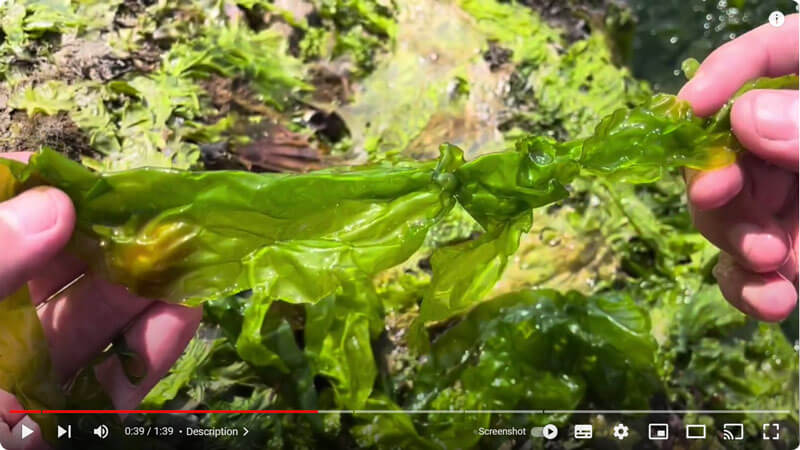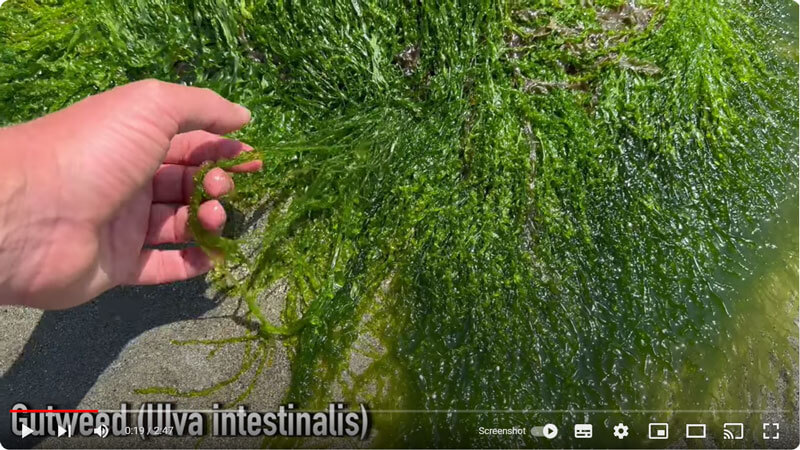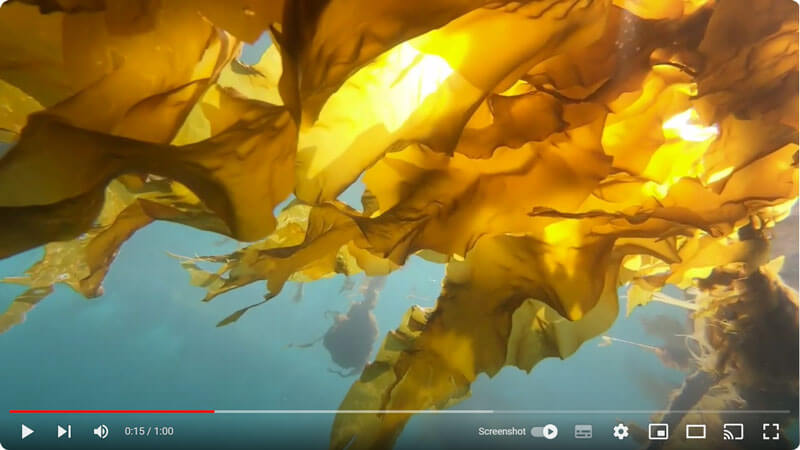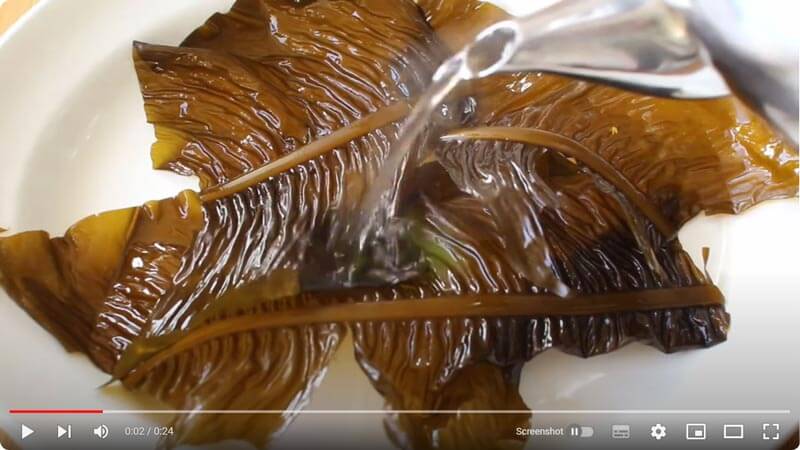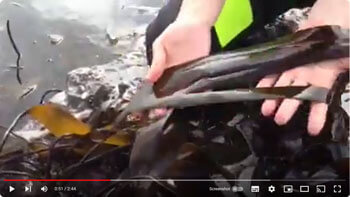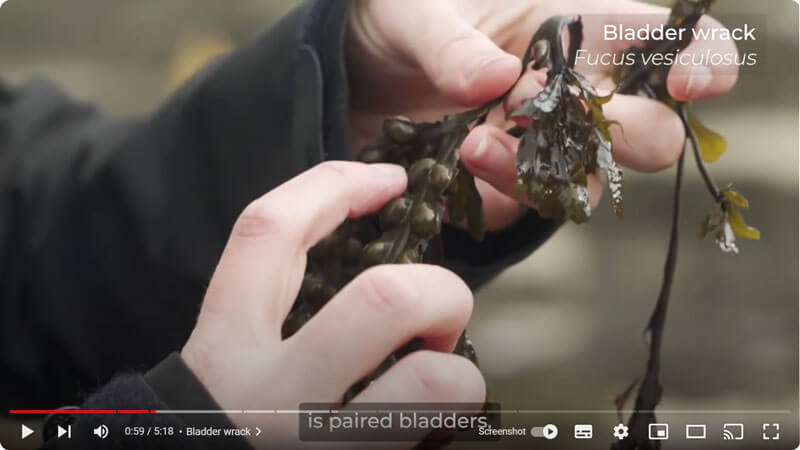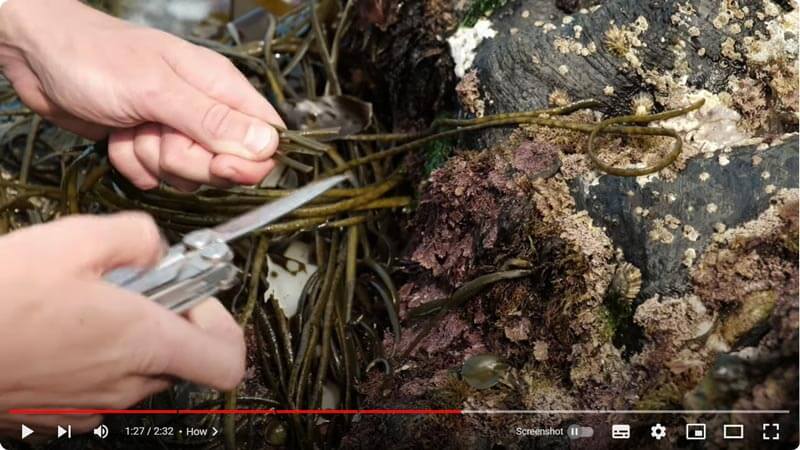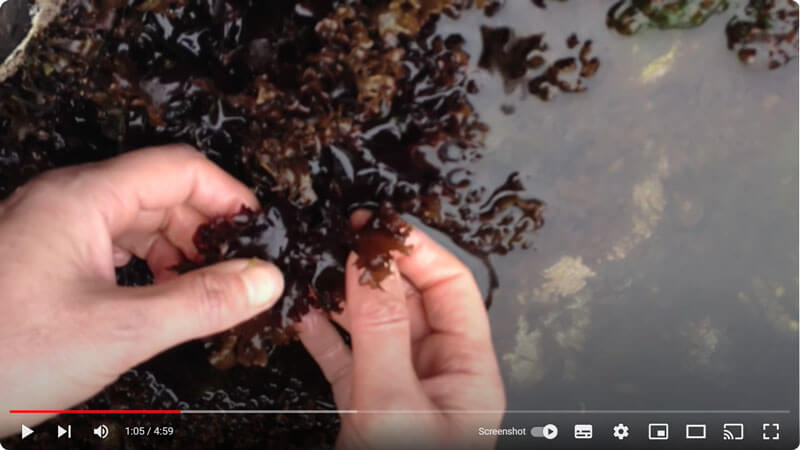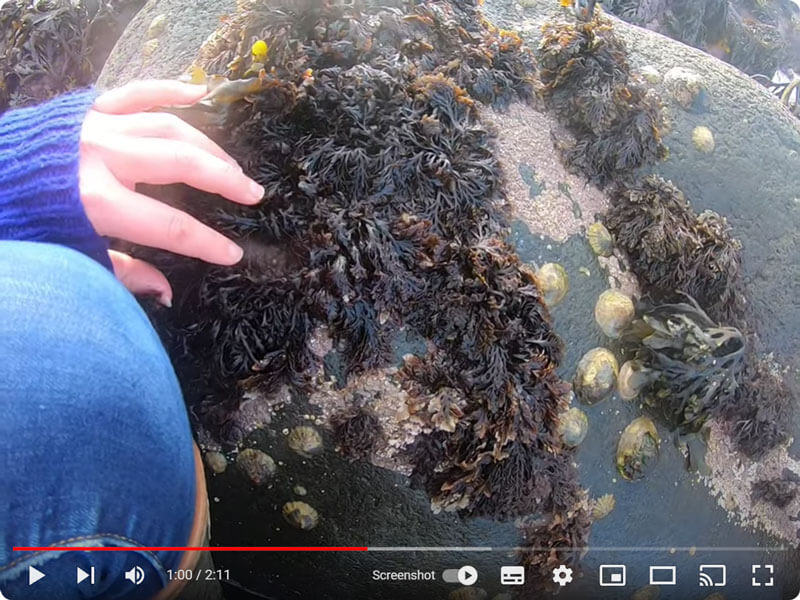We have more than 650 species of seaweed in the UK. All but one are edible (see ‘safety’ below) although some definitely taste better than others.
Rocky shores are the best place to find the weeds as the rocks provide a stable surface for seaweeds to attach to, and the constant movement of the tides ensures they receive plenty of nutrients. The best time to gather seaweed is during the spring with May and June being the best months.
Seaweed isn’t rooted like a regular plant – instead it takes in nutrients through its fronds – but it has holdfasts and will attach itself to rocks with the stem-like part of the weed, the stipe, growing from there.
To harvest it, take a knife and choose the fronds that look healthy, fresh and free from infection, biofilm or other blemishes. When you’re cutting the seaweed off the rocks, leave plenty of the stipe in place so it can continue to grow.

A longer knife like the Mac torpedo is a good choice for harvesting seaweed.
Safety
Besides its abundance, another benefit of foraging seaweed over other free food is that the edible species in the UK such as sea lettuce, laver, dulse, kelp and carragheen are easy to spot and identify. There are also no poisonous seaweeds to be found near to UK shores, so they are a good choice for beginner foragers. Just take care that the area that you are foraging in is clean and away from polluting sources, especially around estuaries. Do take from the rock where you know the seaweed has been covered by sea water some time in the last day, so you know the seaweed is fresh – don’t pick up the bits floating around or washed up on the beach. Wash the seaweed very well before consuming it.
If you’re diving far from the shore and decide to collect some seaweed, the only species to avoid is Desmarestia. This is a stringy looking weed found in deep water and sometimes called ‘acid weed’ since it releases sulphuric acid when damaged. It also has the nickname ‘landlady’s wig’ – perhaps you can see why. It can cause severe digestive issues but since it tastes horrible and sour, it’s unlikely you’d eat it in sufficient quantities to get ill.
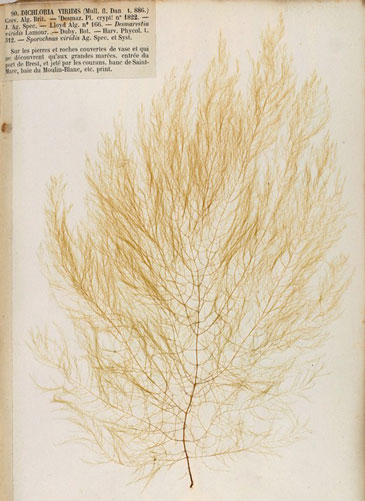
Green seaweeds
Sea lettuce
Sea lettuce – Ulva lactuca – is one of the best (tastiest) types of seaweed to eat. It does look a bit like wet lettuce leaves – see the video below. You’ll find it in sheets, anchored to usually flat rocks that are often washed over by the waves, and it’s the most tender of all the species.
You can use sea lettuce raw in a salad or you can cook it and add it to a soup. It is also a great ingredients for chimichurri and you can make it into mock Brussel-sprouts with this tasty recipe.
Gutweed
Gutweed – Ulva intestinalis – is made up of long strands, a bit like green messy hair (see video below). This seaweed can be cut into thin strips and eaten raw; it can also be baked, grilled, or boiled. It’s nice dried as a chip too, and it can be ground up and used for seasoning.
Brown seaweeds
Kelp
Kelp is a collective name for around 300 species of brown seaweeds and it has unique health attributes. It is super-rich in iodine and you need very little of this mighty weed to get your daily dose. If you’re on a weight-loss journey, kelp should be one of your BFFs: iodine supports the thyroid hormones T3 and T4 and your thyroid manages your metabolism. It’s also one of the best sources of bioavailable calcium – gram-for-gram it has more calcium than milk. Calcium supports a healthy metabolic rate and adequate calcium intake can downregulate enzymes that create fat (there’s more – check out Shawn Stevenson’s book ‘Eat Smarter‘ for a masterclass on eating foods like seaweed for fat burn).
You can eat kelp in plenty of ways – fresh, dried, cooked, added to smoothies and sauces as a powder or served on food as dried granules. In Japan, it is used as a stock for miso and other soups. Making kelp crisps is so easy – just wash the kelp well and soak for 5 to 10 mins, cut into crisp size pieces, pop them in a hot oven on a baking tray for 10 mins (200) and remove once crisp.
Sugar kelp
Sugar kelp – Saccharina latissima – takes its name from the sweet white powder, mannitol, that comes to the weed’s surface as it dries. It has wide flat ribbons with curly edges (see video below). It is an excellent flavoursome addition to soups, stews or dried and used in the flour for breaded fish fillets. The high iodine content means you don’t need much to get its health benefits.
Dabberlocks
Dabberlocks – Alaria esculentais – is also known as badderlocks, or sometimes winged kelp. It can be eaten raw or cooked, into stews, bean dishes and soups. It grows up to 2 m and the whole of the branch will be brown with a distinctive midrib and wavy ‘wings’ each side up to 7 cm wide.
Oarweed
Oarweed – Laminaria digitata – sometimes known as ‘tangle’, has ‘digits’ – ribbons that branch out from the stipe (see video below). It can grow up to four metres long. It tastes of peanuts and can be shredded and pickled as a condiment. When boiled for a good while, it becomes translucent, tender and really tasty. It is an ingredient in the delicious salad at the bottom of this guide.
Bladderwrack
Bladderwrack – Fucus vesiculosus – is easy to spot because of its distinctive paired ‘bladders’ (see video below). Although it’s technically thought of as a brown seaweed, it can vary in colour, and you may find that it is a deep olive green like in the video, or a reddish brown. It can be sliced into strips and eaten raw, baked/grilled/boiled to make it more tender, dried into a chip or used as seasoning.
Channelled wrack
Channelled wrack – Pelvetia canaliculata – is smaller than the other wracks and often found around the high tide line. Its brown branching fronds each have a distinct channel.
Harvest the tender fronds and young tips – these can be added into stir-fries. This nutritious weed is high in vitamin C and selenium.
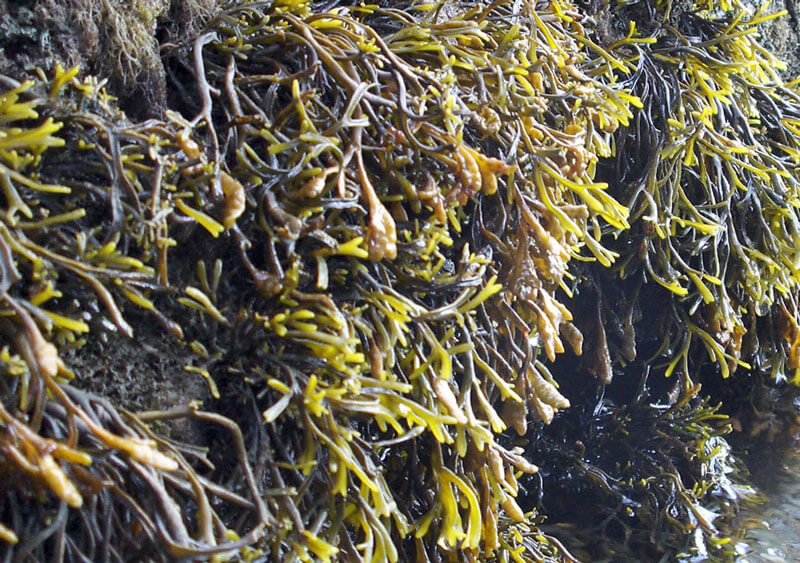 By User:Stemonitis – Self-photographed, CC BY-SA 2.5
By User:Stemonitis – Self-photographed, CC BY-SA 2.5
Japanese wireweed
Japanese wireweed – Sargassum muticum – or ‘japweed’, is an invasive species that competes with native species and is considered a nuisance, so harvest all you will. The fronds are a lengthy 1m+ and the stem has alternating branches with the flat oval blades and distinctive circular bladders. This weed is delicious eaten raw and also makes a very tasty dip – see the recipe here.
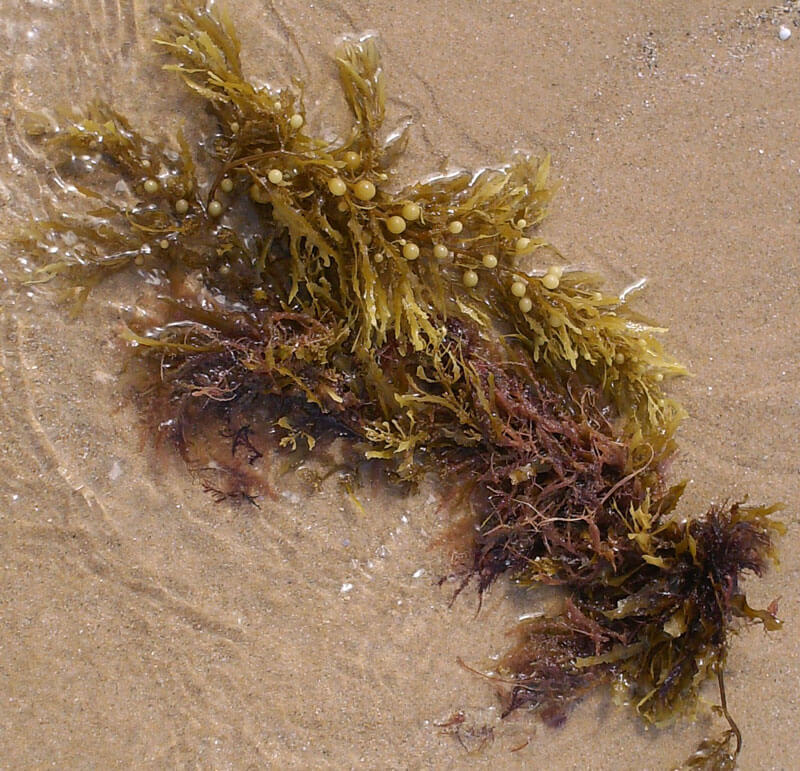 Image by Graça Gaspar – uploaded with the author’s permission, CC BY-SA 3.0
Image by Graça Gaspar – uploaded with the author’s permission, CC BY-SA 3.0
Thongweed (Sea spaghetti)
There’s no prizes for guessing why Thongweed – Himanthalia elongata – is nicknamed ‘sea spaghetti’ (see video below). The young fronds are tasty raw in salads but once they get longer, it’s best to cook this seaweed. You can optionally marinade it first, then cook for 10 minutes or until al dente, and like real spaghetti, it’s tasty served with some olive oil or melted butter, salt and pepper. It doesn’t taste like seaweed and has the texture of pasta.
Red seaweeds
Carragheen
This easy-to-spot seaweed – Chondrus crispus – also known as Irish moss, is largely red (although it can be greenish-yellow, dark purple or purplish-brown) small and fan-shaped and bushy, with flat fronds (see video below). It makes an excellent thickener or a delicious blueberry pudding – you can find recipes for both here.
Laver
Laver may be brownish in colour and its unique property is that it is only one cell thick.
Purple laver – Porphyra (photo below) is the stuff that makes rocks look like they’re wearing a wig. In Cornwall it’s sometimes eaten cold, soaked in vinegar or in Wales they use it to make laver bread. Laver bread isn’t a flavoured bread at all as you might expect, but more of a tasty pudding. You can find recipes for this on BBC good food.
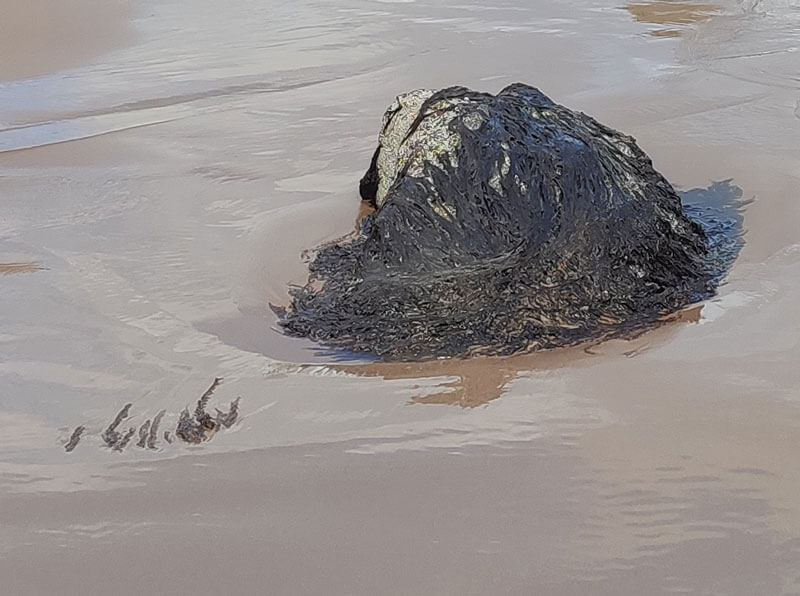
Dulse
Dulse – Palmaria palmata (photo below) is pretty abundant and possibly one of the best known edible seaweeds. It’s very easy to prepare: you can chop it into mash, dry it and make crisps out of it, throw it in a stir fry, chuck it in a breakfast omelette, use it as a natural thickener in a soup or just eat it raw. It is reddish brown with flat, leathery fronds.
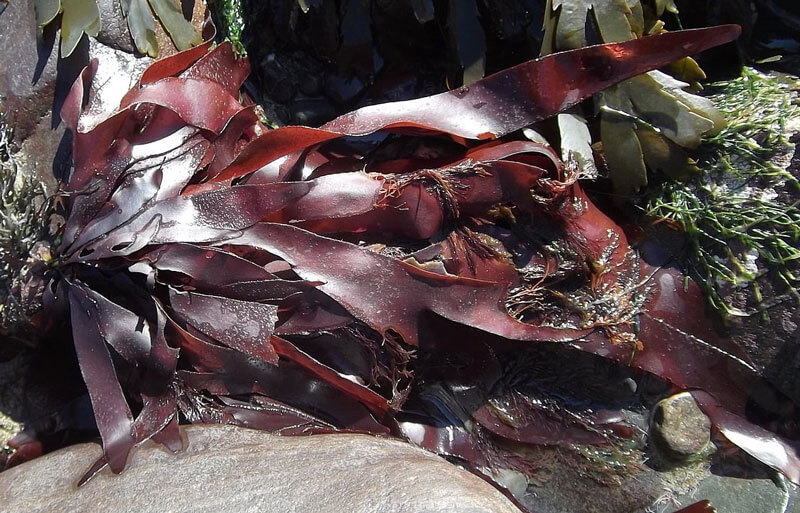 Image by Cwmhiraeth – Own work, CC BY-SA 3.0
Image by Cwmhiraeth – Own work, CC BY-SA 3.0
Pepper Dulse – Osmundea pinnatifida (video below) has a strong buttery flavour, and is sometimes called the “truffle of the sea”. It can be found towards the low tide line, and can be harder to track down. It has a very strong flavour, so much so that its nutrient content is irrelevant, because you aren’t going to need much of it.
Wild food author Geoff Dann has allowed us to share this delicious recipe made with oarweed and pepper dulse. He suggests that if you can’t find allium, you can substitute this for a smaller amount of wild garlic and include some other, less-pungent salad leaves.
Recipe for King Prawn, Oarweed and Three-cornered Leek salad, with Pepper Dulse
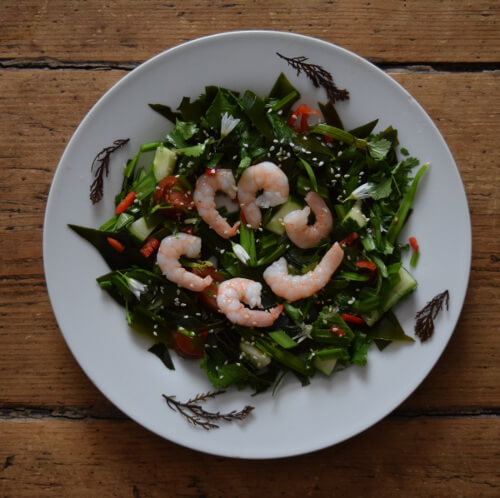
(Serves 4)
Salad:
150g fresh (or reconstituted) Oarweed or Cuvie (Tangle)
100g high-quality tomato, roughly chopped
100g cucumber, roughly chopped
50g three-cornered leek leaves, roughly chopped
30g coriander leaves (no large stalks), finely chopped
One large red chilli, deseeded and finely chopped
20 king prawns
Garnish:
A few sprigs of fresh Pepper Dulse
A few Three-Cornered Leek flowers (unopened buds are also good)
A sprinkling of sesame seeds (black is more authentic, but I didn’t have any to hand so I used normal ones this time)
Dressing:
Juice of one lime (5 tbsp)
5 tbsp fish sauce
1 tsp muscovado sugar
Method:
- Bring a pan of water to the boil and simmer the Kelp for 5-6 minutes, then douse in cold water and drain.
- Put the kelp, tomato, cucumber, coriander, three-cornered leek leaves and chilli in to a bowl and mix well.
- Prepare the dressing (add all the ingredients to a small bowl and mix).
- Plate up the salad mix, with the prawns in the middle, then add 2 tbsps of dressing to each plate and garnish with Three-cornered Leek flowers and sesame seeds on top and Pepper Dulse at the side.
Credit: Geoff Dann

